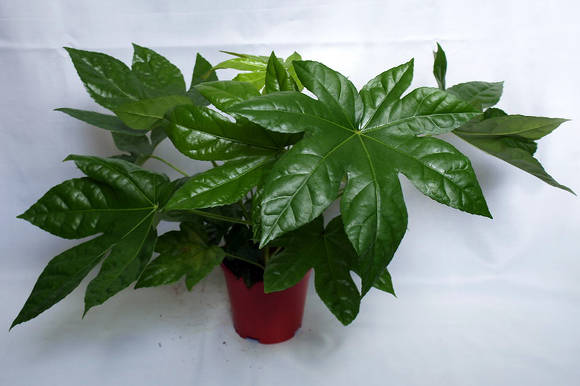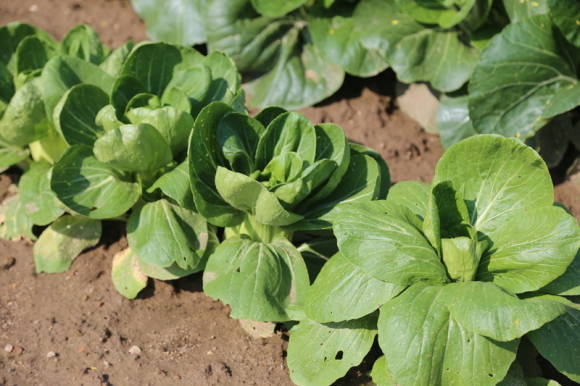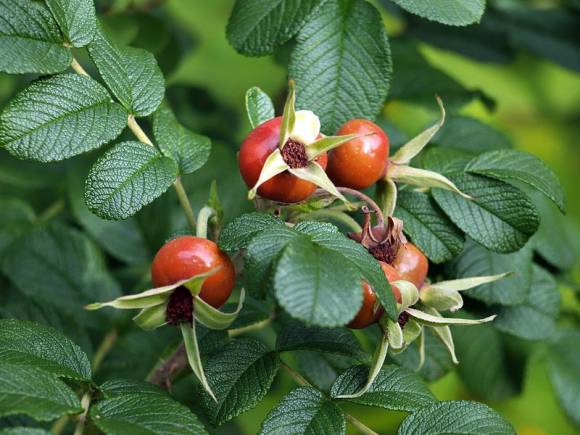
This type of marigold, which grows in Central America - from Mexico to Guatemala, is not as spectacular as the regulars of our flower beds - rejected marigolds, erect marigolds and thin-leaved marigolds. But in its own way it is beautiful and has other advantages - medicinal and spicy-flavoring. The sweet aroma of the plant resembles a mixture of tarragon and anise, for which the plant is often called Mexican tarragon, Texas tarragon, Mexican calendula.
Radiant marigolds (Tagetes lucida) - a perennial herb, forming sprawling bushes 30-75 cm high and up to 30 cm in diameter. Stems are erect, branched in the upper part, dense, ribbed, glabrous, with a purple tint. Leaves are opposite, sessile, 4-10 cm in length, from lanceolate to narrow-lanceolate, narrowed at the apex, usually obtuse, finely serrate along the edge, at the base are awn-serrate, dense green (and not glaucous, like in real tarragon). Inflorescences - numerous baskets about 1.3 cm in diameter, collected in flat, apical semi-umbrellas, on very short pedicels. The marginal flowers are ligulate, usually 3-5 in number, broadly reniform, with a cut, notched-toothed apex, bright, light golden yellow. Disc flowers, 5-7 in number, dense yellow. The plant blooms from August to frost.
In Europe, the plant has been grown since 1798 as an annual.
This is a very ornamental plant, there are several varieties, for example:
Huichol is a traditional clone used by the Huichol Indians that grows at an altitude of 1500-1800 m in Mexico. One of the most fragrant.
Cultivation of radiant marigolds
Sowing... The cultivation process for this species is no different from other marigolds. Seeds are sown for seedlings at the end of March. Seedlings appear in 2 weeks.
Seedlings are planted in open ground at the end of March - beginning of June, they almost cannot withstand frost. Suitable for growing in containers.

Lighting... The place is chosen sunny, although light partial shade is possible.
The soil well-drained, moderate organic matter, slightly acidic to slightly alkaline. Approaching cultivated loams and sandy loams.
Watering... The plant is drought-resistant, but needs regular watering for good flowering.
Mulching... Mulching the plants with compost or straw immediately after planting is beneficial.
Pruning... Removing dead buds before seed formation prolongs flowering.
Isolation of the roots of actively growing plants, which appear 3-4 months after sowing, has an insecticidal effect on the soil, is effective against nematodes and, to some extent, against slugs and some resistant weeds. Neighborhood with radiant marigolds has a beneficial effect on tomatoes.
Food and other uses of radiant marigolds
Fresh or dried leaves of the plant are used as a tarragon substitute for flavoring soups, sauces, etc. They add it to dishes at the end of cooking in order to preserve the taste and aroma as much as possible.
For long-term storage, Mexican tarragon is best harvested frozen or in vinegar in order to preserve all the nutrients as much as possible, and most importantly, its unique aroma.
As well as from real tarragon, excellent aromatic vinegar is obtained from the leaves of radiant marigolds. To do this, fill a 2 liter glass bottle with plenty of leaves, top up with wine vinegar and let sit for 3 weeks. Strain into glass bottles and add a flowering twig for decoration.
And here are some more recipes:
- Chop a leaf or two very finely and sprinkle it over a fresh fruit salad with lime and sugar.
- Combine finely chopped leaves with orange zest and chopped ginger for a delicious citrus oil.
- Add a couple of crumpled leaves to the fruit punch.Fresh leaves of the plant flavor drinks well.
Fresh and dried leaves and flower baskets make a delicious tea with anise aroma. It is very popular in Latin America not only as a refreshing drink, but also as a remedy for gout, colds, edema and rheumatism.
The petals of the plant are used as a seasoning and to decorate dishes.
The flowers are suitable for yellow dye production.
Burning the dried herb of the plant repels insects. The dried leaf powder is often used as a repellent against mosquitoes, chicken lice and other insects.

Medicinal properties of radiant marigolds
Even in ancient times, the Aztecs knew about the strong anxiolytic properties of the plant and used it as a ritual, as well as in the composition of medicinal powders. He was associated with the rain god Tlaloc. The leaves were used to flavor a cocoa-based Aztec 'chocolatl' frothy beverage.
The leaves and the entire aerial part of the plant have digestive, diuretic, antipyretic, hypotensive, sedative and stimulating properties. The use of the plant depresses the central nervous system and is also considered anesthetic. Used in Mexico to treat diarrhea, nausea, indigestion, colic, hiccups, malaria and febrile diseases, topically to treat scorpion bites and remove ticks.
The leaves can be harvested and used as needed, while the entire plant is harvested in bloom and dried for later use.
Modern research has shown that methanol extract of flowers inhibits the growth of Staphylococcus aureus, Escherichia coli, candidiasis, and this effect is enhanced by ultraviolet irradiation.









